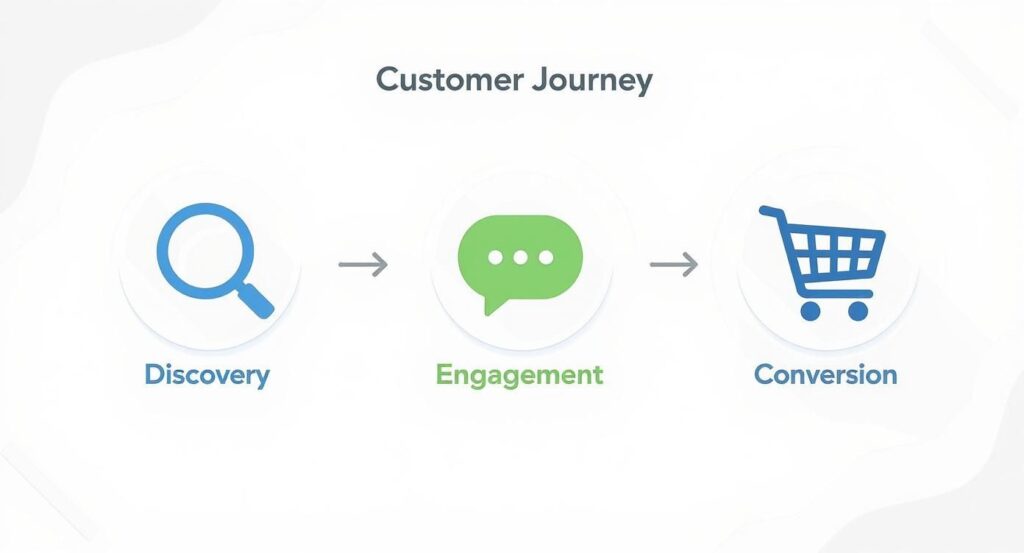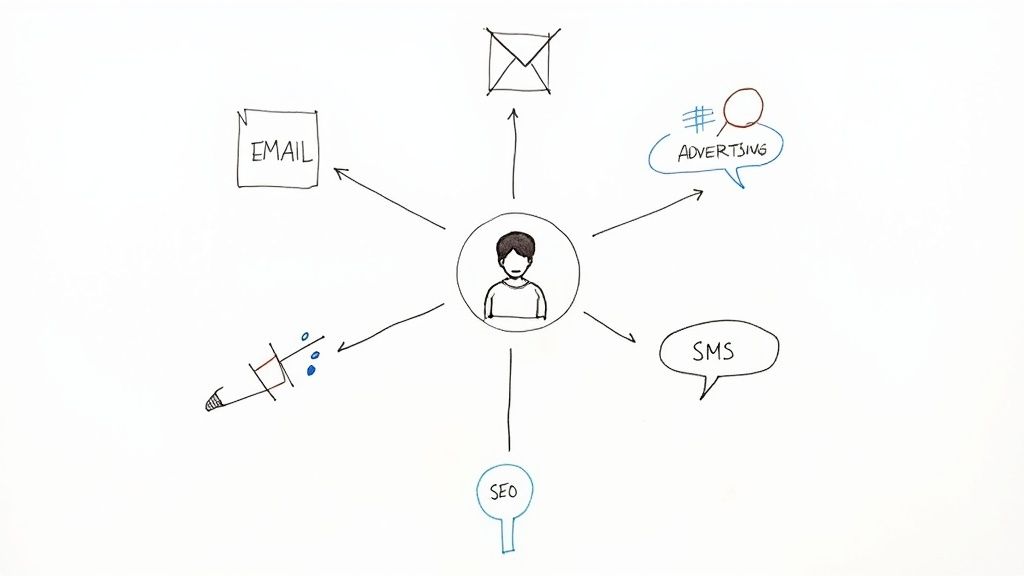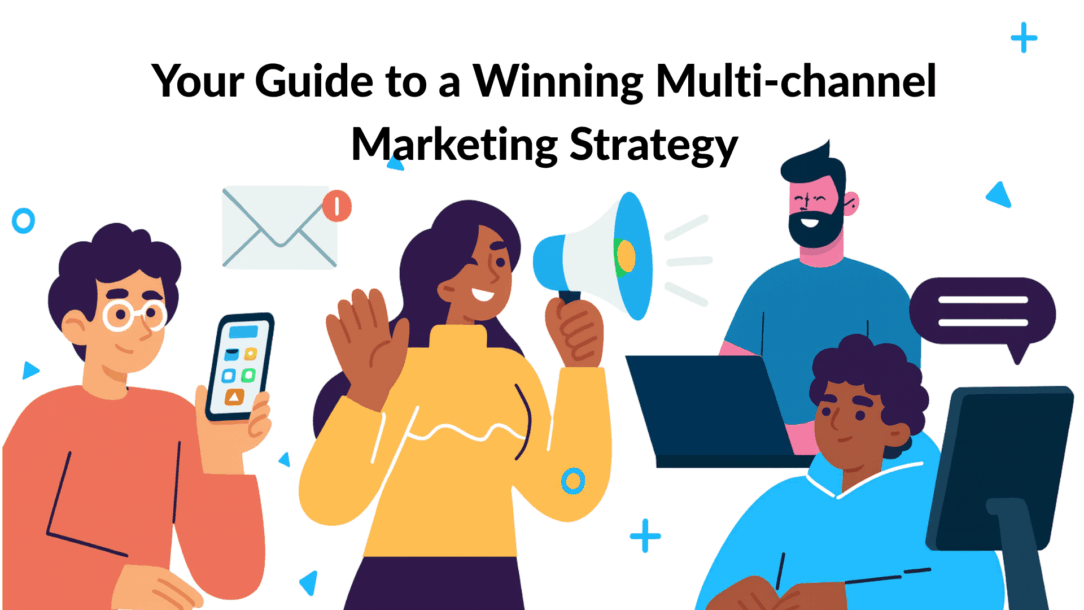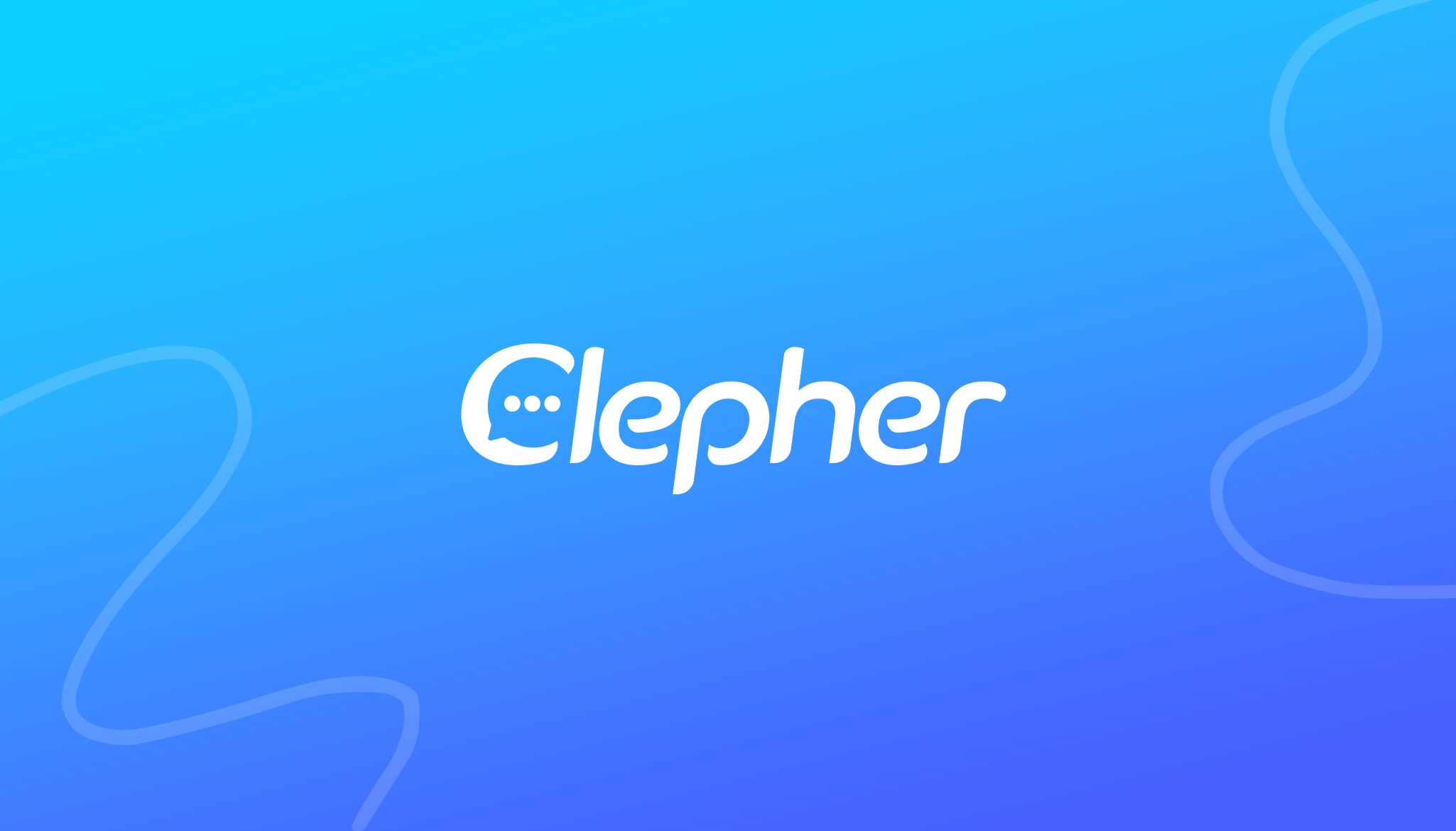A multichannel marketing strategy is all about connecting with your customers on the platforms they already use and love. Think of it as setting up shop on different streets where you know your audience hangs out—like social media, email, and your website—instead of just hoping they’ll find you on one quiet corner. It’s about being present and part of the conversation, wherever it’s happening, and making sure every marketing campaign reaches customers through their preferred channel.
What Is a Multi-channel Marketing Strategy and Why It Matters Now
Let’s ditch the textbook definitions. Imagine your marketing is a conversation. A single-channel approach is like shouting from one corner of a huge, crowded room, hoping the right people hear you. It’s loud, but not very effective.
A multi-channel marketing strategy, on the other hand, is about walking around that room and joining the different conversations your customers are already part of. This is the foundation of effective multichannel marketing campaigns, where each touchpoint supports your visibility in a natural way.
This means you might run a targeted marketing campaign on Instagram, send a promotional newsletter via email, and publish a genuinely helpful blog post—all around the same time. Each of these marketing channels works with its own goal and message. They don’t always create one seamless journey, but they work in parallel to cast a wider net and maximize your brand’s visibility.
Meeting Customers on Their Terms
People don’t follow a straight line to a purchase anymore. They might see your product on Facebook, search for reviews on Google a few days later, and finally click through to your website from an email a week after that. A multi-channel presence means you’re there at each of those touchpoints, building familiarity and trust along the way.
The goal is to give customers the choice to interact with your brand on the platforms they already use and prefer—that is, connecting with them through their preferred channel. It’s a customer-first approach, and the results speak for themselves. In fact, companies that run integrated multichannel marketing campaigns are three times more effective than those that just stick to one channel.
Single-Channel vs. Multi-channel Marketing Campaign at a Glance
This table offers a quick comparison, highlighting why putting your eggs in more than one basket is a smarter move in today’s market.
| Aspect | Single-Channel Marketing | Multi-Channel Marketing |
|---|---|---|
| Reach | Limited to one platform’s audience | Broader reach across multiple platforms |
| Customer Engagement | One-dimensional; engagement is restricted | Higher engagement through varied touchpoints |
| Risk | High risk; dependent on a single platform | Lower risk; diversified across channels |
| Customer Data | Limited insights from one source | Richer, more comprehensive customer data |
| Flexibility | Rigid; hard to adapt to market shifts | Adaptable; can pivot strategy by channel |
Simply put, a multi-channel strategy gives you more opportunities to connect, more data to learn from, and a more stable foundation for your marketing efforts.
A strong multi-channel strategy is your business’s insurance policy against platform dependency. When you build an audience across email, SMS, and social media, an algorithm change on one platform won’t derail your entire marketing engine.
Building a Resilient Marketing Engine
Relying on just one channel is a huge gamble. What happens if that platform’s algorithm suddenly changes? Or your ad account gets suspended? Or a new competitor completely dominates the space?
A multi-channel strategy diversifies your marketing efforts, making your business far more resilient.
This isn’t just a game for massive corporations. Small businesses see huge benefits from being present across different platforms. By focusing on the few channels where their specific audience is most active, even a small team can create a powerful, reliable presence. You can learn more about how different-sized businesses tackle this in our guide on multi-channel marketing strategies.
This diversification doesn’t just protect your flow of new leads; it gives you a wealth of data from different sources, helping you understand your customers on a much deeper, more meaningful level.
Building Your Foundational Cross-channel Marketing Framework
A great multi-channel marketing strategy doesn’t just happen—it’s built on purpose. Think of it like building a house; you wouldn’t start hammering without a blueprint. This framework is your blueprint, turning vague goals into an actionable plan that makes every dollar and minute count.
Let’s ditch the guesswork and build a strategy that actually works. It all comes down to four critical pillars: defining your audience, picking your channels, unifying your message, and setting your content cadence. Get these right, and your efforts will be coordinated, consistent, and built to get results.
This is the simplified journey your customers take when they interact with your brand across different touchpoints.

customer journey
Each stage—Discovery, Engagement, and Conversion—is a huge opportunity for a specific channel in your framework to make an impact.
Pillar 1: Define Your Audience Personas
Before you can talk to your customers, you have to know who they are. This goes beyond basic demographics. The goal is to create detailed audience personas that feel like real people, representing segments of your ideal customer base.
Think of each persona as a character. What are their goals? What problems can you solve for them? Where do they hang out online? Answering these questions gives you a clear picture of their digital behavior and motivations. You can discover how to apply effective customer segmentation strategies to get this personalization just right.
To start building your personas, dig into these areas:
- Behavioral Data: Look at your website analytics. How do people move through your site? Which blog posts are they reading? What products get the most views?
- Social Listening: Pay attention to conversations happening on social media. What are people’s pain points? What language do they use to describe them?
- Customer Surveys: Just ask! Send surveys to your current customers to find out about their challenges, goals, and where they get their information.
This deep understanding is the bedrock of your entire strategy. It dictates everything that comes next, from the channels you choose to the messages you create.
Pillar 2: Select Your Strategic Channel Mix
Once you have clear personas, you can pick your channels based on data, not just what’s trendy. The question isn’t, “Should we be on TikTok?” It’s, “Is our target audience actually on TikTok, and are they open to hearing from us there?”
Different channels serve different purposes. Social media is fantastic for discovery and community building, while email marketing is a powerhouse for nurturing leads and driving repeat business. Your job is to create a strategic mix that guides customers smoothly from one stage to the next.
A common mistake is trying to be everywhere at once. A powerful multi-channel strategy isn’t about using the most channels; it’s about mastering the right channels where your audience is most engaged.
For example, a B2B SaaS company might lean heavily on LinkedIn for thought leadership, Google Ads to capture high-intent searches, and email to nurture trial users. A direct-to-consumer fashion brand would likely prioritize Instagram for visual discovery, SMS for flash sales, and a blog for style guides. You can also explore how AI and automation redefine the customer experience to make this process even smarter.
Pillar 3: Craft a Unified Brand Message
Consistency builds trust. While your tone might shift slightly from platform to platform—a bit more professional on LinkedIn, a little more casual on Instagram—your core brand message must stay the same. This unified voice makes your brand feel familiar and reliable, no matter where a customer finds you.
Your brand message should answer three simple questions:
- Who are you? (Your brand’s identity and personality)
- What do you do? (The product or service you offer)
- Why does it matter? (The unique value you bring to your customer)
This message becomes the common thread weaving through every ad, email, and social media post. For instance, a brand built around sustainability would echo that value in its eco-friendly packaging, its blog content about conscious living, and its social posts highlighting ethical production.
Pillar 4: Set a Coordinated Content Cadence
Finally, you need a content cadence. This is more than a calendar of what to post and when. It’s a strategic plan for how your content across different channels will work together to tell a cohesive story over time. A coordinated cadence ensures your marketing feels like a thoughtful narrative, not a series of random, disconnected shouts.
For a new product launch, your cadence might look something like this:
- Week 1: Teaser posts on social media to build curiosity.
- Week 2: A detailed blog post announcing the product, shared via your email newsletter.
- Week 3: A launch-day promotion sent through SMS and targeted ads on Facebook.
- Week 4: Highlighting user-generated content and testimonials on Instagram.
This approach creates momentum, guiding your audience through a planned experience instead of bombarding them from all sides. Mastering these four pillars creates a robust and repeatable framework for success.
Choosing the Right Channels for Your Business
Okay, you’ve got your framework mapped out. Now for the fun part: deciding where to talk to your customers. Picking the right platforms isn’t about being everywhere at once. It’s about being everywhere that matters to your specific audience. This is where your strategy becomes a real, tangible presence.

multi-channel marketing
Think of your channels like a toolkit. You wouldn’t use a hammer to turn a screw. Both are useful, but they have different jobs. It’s the same with email, social media, and SMS. Each has unique strengths and plays a distinct role in guiding a customer from browsing to becoming a loyal fan.
Your goal is to build a cohesive toolkit where every channel supports the others, creating a powerful, coordinated effort that hits your business goals.
The Modern Marketer’s Toolkit
Let’s break down the most impactful channels and what they’re really good for. Each one offers a different way to connect, and knowing their purpose is key to making them work together.
- Email Marketing: Your relationship-building powerhouse. Email is perfect for nurturing leads, sharing deep-dive content, announcing big sales, and driving repeat purchases. It’s a direct line to your most engaged fans.
- Social Media: This is where community and discovery happen. Platforms like Instagram, Facebook, and LinkedIn are brilliant for showing off your brand’s personality, chatting with followers, and finding new people through organic posts and paid ads.
- SEO and Content Marketing: This is how you attract people actively looking for what you offer. By creating useful content that answers their questions, you pull in high-intent visitors from search engines like Google. A solid blog or resource hub positions your brand as an authority they can trust.
- Paid Advertising: This channel gives you precision and speed. With platforms like Google Ads and Facebook Ads, you can zero in on specific demographics and behaviors to drive immediate traffic, test new offers, and retarget interested visitors.
- SMS Marketing: Your tool for urgent, high-impact messages. SMS is best for time-sensitive alerts, flash sales, and exclusive deals. Its incredibly high open rates make it a killer channel for messages that need to be seen right away.
Putting It All Together: A Practical Example
Let’s see how these channels work together with a fictional e-commerce brand called “Urban Bloom,” which sells sustainable home goods.
Urban Bloom knows their ideal customer—”eco-conscious millennials”—hangs out on Instagram and reads blogs about sustainable living. Their multi-channel strategy is built around these behaviors, creating a journey that feels helpful, not pushy.
An effective channel mix isn’t a random assortment of platforms. It’s a choreographed customer journey where each touchpoint logically leads to the next, building momentum and trust along the way.
The journey kicks off on social media. Urban Bloom runs a targeted Instagram ad featuring their new recycled glass vases. A potential customer sees it, loves the aesthetic, and clicks through to a blog post: “5 Ways to Style Your Home Sustainably.”
From Discovery to Conversion
The blog post, optimized for SEO, doesn’t just give great tips; it also has a call-to-action to subscribe to their newsletter for more eco-friendly home ideas. The customer signs up, entering Urban Bloom’s email funnel.
A few days later, a welcome email lands in their inbox with a 10% discount on their first purchase. They browse the site but get distracted and don’t buy. This is where the channels really start working together. The next day, a perfectly timed email reminds them of the items they looked at. That little nudge works—they use their discount code and make a purchase.
This example shows how a well-planned strategy guides a customer from that first flicker of interest on social media to a final sale driven by email, with SEO playing a key supporting role. For many businesses, social is the starting point. In fact, 55% of marketing professionals flagged it as a top-impact tactic in 2024, and for B2B, platforms like LinkedIn are essential for 84% of marketers. You can discover more insights on multi-channel marketing trends and see how other pros are adapting their strategies.
Executing and Automating Your Strategy
A brilliant strategy on paper is just an idea. The real magic happens when you bring it to life with smart execution and automation. This is where you build the engine that runs your entire plan, turning static concepts into a dynamic, results-driven machine that works for you 24/7.
This isn’t about just scheduling posts. It’s about creating automated customer journeys that deliver the right message on the right channel at precisely the right moment. The goal is to make every interaction feel personal and timely, guiding customers from one touchpoint to the next without you lifting a finger.
From Manual Effort to Automated Flows
Marketing automation is the technology that makes modern execution possible. Think of it as the central nervous system for your strategy, connecting channels and data to trigger actions based on what customers do. Instead of manually reacting to every click, you build automated workflows—or “flows”—that handle these interactions for you.
For example, a new subscriber signs up for your newsletter from a pop-up on your website. That one action can automatically kick off a whole sequence:
- Immediately: They get a welcome email with a special offer.
- 24 hours later: If they haven’t used the offer, an SMS reminder goes out.
- 3 days later: They’re added to a “New Subscribers” audience for targeted Facebook ads.
This entire sequence runs on its own, nurturing the new lead across multiple channels without any manual work. To get this right, you’ll want to incorporate some solid marketing automation best practices.
Hyper-Personalization Through Behavioral Segmentation
Good automation runs on data. The most powerful way to use that data is through behavioral segmentation. This goes beyond basic demographics and groups your audience based on their actual actions.
Instead of sending the same generic message to all your customers, you can create hyper-personalized communication for specific segments:
- “Cart Abandoners”: People who added a product to their cart but didn’t check out.
- “Repeat Buyers”: Loyal customers who have purchased from you more than three times.
- “High-Value Prospects”: Users who keep coming back to your pricing page.
Each of these segments can receive a unique, automated campaign tailored to their situation. This level of personalization makes your marketing feel incredibly relevant and helpful, which is proven to boost conversion rates.
Creating a Unified Customer View
For automation to work like a well-oiled machine, your tools need to talk to each other. A huge part of execution is integrating your key platforms—like your e-commerce store, CRM, and email service—to create a single, unified view of each customer.
Your marketing automation platform should be the hub where all customer data comes together. When your Shopify store, your Messenger bot, and your email list are all synced up, you can finally see the complete customer journey, not just isolated snapshots.
This integration unlocks truly powerful automation. When someone buys something, that data should instantly update their profile in your marketing platform. That might mean pulling them out of a sales campaign and adding them to an onboarding sequence. It’s what prevents awkward messaging and ensures a smooth post-purchase experience.
Optimizing Performance with A/B Testing
Automation isn’t a “set it and forget it” game. The final piece is continuous optimization through A/B testing. This is as simple as creating two variations of a message—an “A” version and a “B” version—to see which one performs better.
You can A/B test almost anything in your automated flows:
- Email Subject Lines: Does a question or a statement get more opens?
- Ad Copy: Is a short, punchy message more effective than a longer one?
- Calls-to-Action (CTAs): Does “Shop Now” convert better than “Learn More”?
- Timing: Should you send a cart abandonment SMS after 1 hour or 4 hours?
By constantly testing and analyzing the results, you gather real-world data on what your audience responds to. This process turns your marketing engine into a learning machine, ensuring your automated strategy gets smarter and more effective over time.
Measuring Success with the Right KPIs
Launching a multi-channel strategy without tracking performance is like driving with your eyes closed. You’re moving, but you have no idea if you’re heading in the right direction. To get better, you have to measure what matters—and that means moving past vanity metrics to focus on Key Performance Indicators (KPIs) that prove business growth.
This isn’t about drowning in spreadsheets. It’s about building a clean, simple dashboard that gives you an honest look at what’s working and what’s falling flat. By organizing your measurement plan into three core areas—channel, campaign, and customer—you can finally prove the value of your efforts and spot your best chances to improve.
Channel-Specific Performance Metrics
Every channel in your mix has a specific job, which means each one needs its own report card. These metrics tell you how well a single platform is performing its role. They’re the ground-level data points that help you diagnose problems and celebrate wins.
For instance, a high email open rate is great—it means your subject lines are grabbing attention. But if your click-through rate is low, it’s a clear sign the content inside isn’t hitting the mark.
Here are the essential channel-specific KPIs to watch:
- Email Marketing: Track Open Rate, Click-Through Rate (CTR), and Unsubscribe Rate. These tell you about the health of your list and the relevance of your messages.
- Social Media: Monitor Engagement Rate (likes, comments, shares) and Follower Growth. This shows how well you’re building a real community.
- Paid Advertising: Focus on Cost Per Click (CPC) and Ad CTR. These are non-negotiable for managing your budget and knowing if your ad creative is effective.
- SEO & Content: Measure Organic Traffic, Keyword Rankings, and Time on Page. This tells you if you’re capturing search interest and keeping people hooked.
Holistic Campaign-Level Metrics
Channel metrics are vital, but they don’t give you the full picture. Campaign-level metrics zoom out to show the combined impact of all your channels working together for a single goal, like a product launch or a holiday sale. These KPIs measure the overall efficiency of your integrated strategy.
Think of it this way: Channel metrics are like checking the performance of each musician in an orchestra. Campaign metrics tell you how beautifully they all play the symphony together.
This is where you directly connect marketing spend to real business results. You can calculate exactly how much it costs to get a new customer across all the touchpoints in a campaign, giving you a crystal-clear view of your profitability.
Key campaign metrics include:
- Cost Per Acquisition (CPA): The total cost of a campaign divided by the number of new customers it brought in. This is the ultimate measure of marketing efficiency.
- Conversion Rate: The percentage of people who take a desired action (like buying something or signing up) after seeing your campaign.
- Return on Ad Spend (ROAS): This calculates the total revenue generated for every dollar spent on ads, showing the direct financial return of your paid efforts.
Customer-Centric Business Metrics
At the end of the day, marketing is all about growing the business. Customer-centric metrics are the highest-level KPIs, tying your activities directly to long-term revenue and value. They help you understand not just how you get customers, but how valuable those customers are over time.
These are the numbers that should guide your biggest strategic decisions. For example, if you discover that customers acquired through your blog content have a much higher lifetime value, you know exactly where to double down on your budget.
Focus on these critical business metrics:
- Customer Lifetime Value (CLV): This predicts the total profit your business can expect from a single customer over their entire relationship with you. A rising CLV means you’re attracting and keeping the right kind of customers.
- Attribution Modeling: This is the process of giving credit for conversions to different touchpoints along the customer’s journey. It helps you finally understand which channels are the true heavy hitters in driving sales, from the very first touch to the final click.
Essential KPIs for Multi-Channel Marketing Strategy
To tie it all together, you need a clear framework that connects what you measure to why it matters. A well-defined set of KPIs ensures you’re not just collecting data but using it to make smarter decisions that align with your core business objectives.
The table below breaks down the most important metrics, explaining what each one tells you and which primary business goal it supports.
| KPI (Key Performance Indicator) | What It Measures | Primary Business Goal |
|---|---|---|
| Conversion Rate | The percentage of users who complete a desired action (e.g., purchase). | Driving Sales & Leads |
| Customer Acquisition Cost (CAC) | The total cost to acquire one new customer. | Profitability & Efficiency |
| Customer Lifetime Value (CLV) | The total revenue a customer is expected to generate over time. | Long-Term Growth & Retention |
| Return on Ad Spend (ROAS) | The revenue earned for every dollar spent on advertising. | Marketing ROI & Budgeting |
| Engagement Rate | How actively involved is your audience with your content. | Brand Awareness & Community |
| Channel-Specific CTR | The percentage of people who click a link on a specific channel. | Content & Ad Effectiveness |
| Attribution Data | Which touchpoints contribute most to conversions? | Strategy Optimization & Insight |
By tracking these KPIs, you move from guesswork to a data-informed strategy. You’ll know precisely which channels deliver the best return, which campaigns resonate most with your audience, and ultimately, how your marketing efforts are fueling sustainable business growth. This is the foundation of a successful multichannel marketing setup, where every marketing communications effort supports your broader multi-channel marketing campaign.
Common Pitfalls and How to Avoid Them
Even the sharpest multi-channel marketing strategy can go off the rails. Real success often comes from knowing what not to do. The first step to building a plan that actually works is understanding the common traps that drain budgets and frustrate customers—especially when brands fail to maintain a cohesive strategy across all channels.
Too many businesses stumble into the same predictable patterns: creating jarring, disconnected experiences, chasing the latest shiny platform instead of their audience, and burning through resources with nothing to show for it. These mistakes hold back even the best multichannel approach and prevent brands from unlocking the full potential of modern marketing.
Let’s break down these classic mistakes and give you a clear, actionable way to steer clear of them.
The Disconnected Brand Experience
This is one of the biggest—and most common—blunders: your messaging is all over the place. It happens when your email team is running a promotion that your social media team has never even heard of. For the customer, it’s just plain confusing.
What Went Wrong: A clothing brand blasts an email offering 25% off everything. A customer gets excited and clicks through, only to find the homepage and social ads are all pushing “New Arrivals” with zero mention of the sale. The customer feels baited and immediately bounces. This kind of inconsistency shows why a cohesive strategy matters across email, ads, and social media marketing.
How to Fix It: Create a single, centralized content calendar that every marketing team lives in. This becomes your single source of truth, making sure promotions, messaging, and brand voice are locked in everywhere. A quick weekly sync meeting is also a great way to close any gaps between channel managers.
Creating Accidental Channel Silos
Another huge pitfall is treating each channel like its own little kingdom. When your platforms don’t talk to each other, you lose a massive amount of customer data and any chance of creating a smooth, guided journey. Your Facebook ads should absolutely inform your email strategy, and your email interactions should shape what people see on social.
When channels operate in silos, the customer is forced to restart their journey at every touchpoint. This isn’t just inefficient—it actively damages brand perception and trust. A good omnichannel marketing setup ensures your channels work together instead of leaving customers stranded.
Choosing Hype Over Hard Data
Jumping on a trendy new platform just because you have FOMO is a classic mistake. A real multi-channel strategy is built on cold, hard data, not the fear of being left out.
What Went Wrong: A B2B software company pours a ton of money into creating TikTok content because it’s the “next big thing.” The problem? Their ideal customers—enterprise-level IT managers—are actually spending their time on LinkedIn and niche industry forums. The campaign racks up views but delivers zero qualified leads. This is a perfect example of misunderstanding where a multichannel approach truly works.
How to Fix It: Go back to your audience personas. Dig into the analytics from your existing channels and send out customer surveys to find out where your audience actually hangs out and looks for information. Allocate your budget based on proven performance, not platform popularity.
By sidestepping these all-too-common errors, you’re already on your way to building a strategy that’s more effective, efficient, and laser-focused on your customer—something you’ll also see in strong multichannel marketing examples.
Common Questions, Answered
Even the best multi-channel plans run into questions. Here are some of the most common ones that pop up, with straight-up, practical answers.
Ready to stop guessing and start building an automated, results-driven machine? With Clepher, you can build intelligent chatbot flows, segment your audience with laser precision, and connect all your favorite marketing tools. Create a truly seamless customer experience across Messenger, Instagram, and more. Start your free trial today and see how easy it is to automate your growth.
Related Posts



